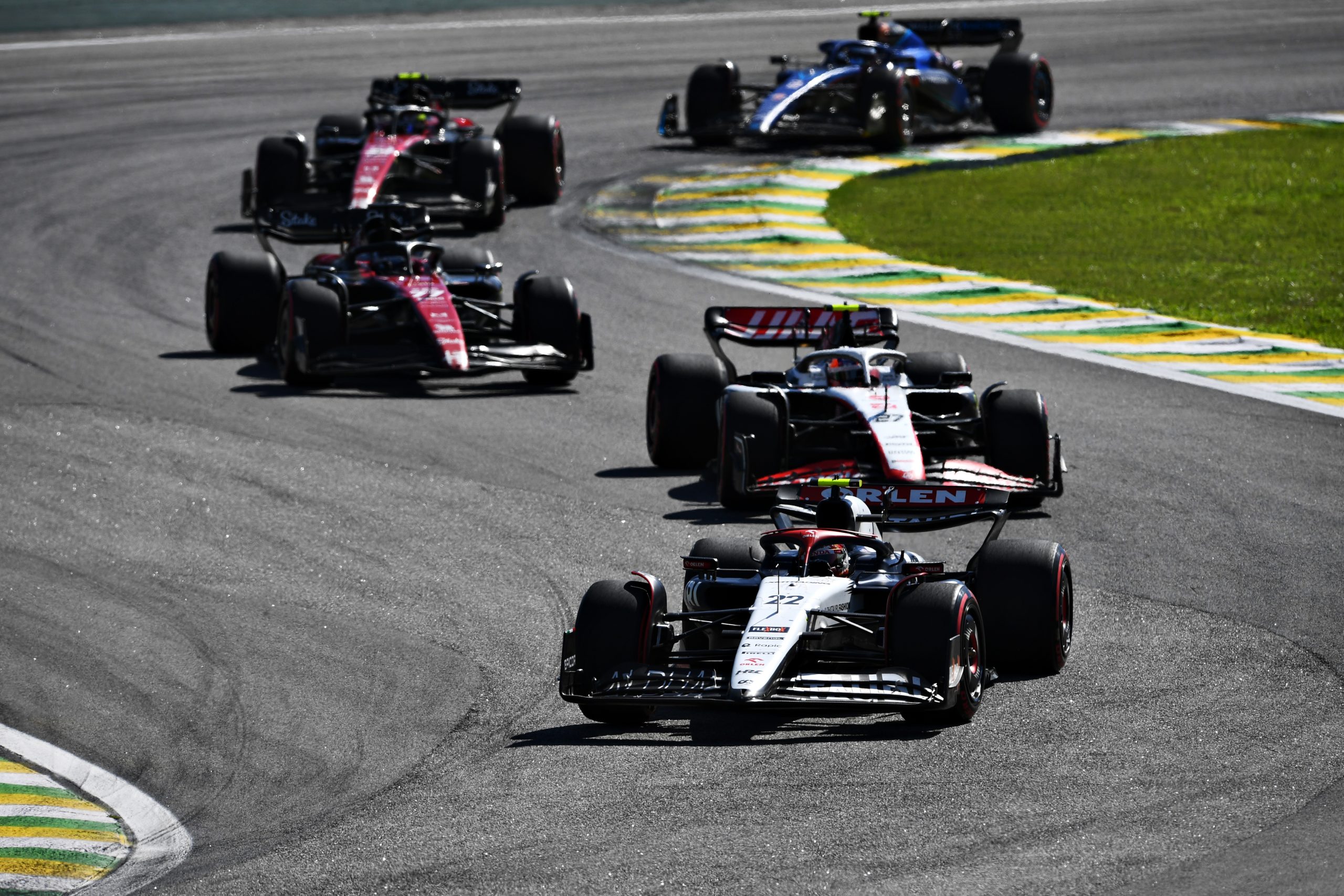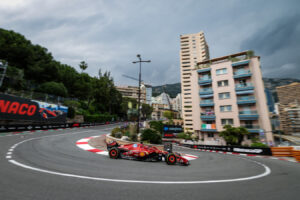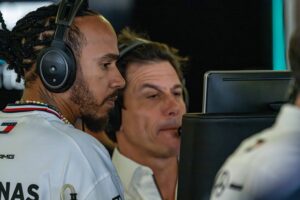The Brazilian Grand Prix has ended, so let’s take a look at the strategies used throughout the weekend.
The Brazilian Grand Prix weekend started with the unexpected appearance of Lance Stroll in Q3. The Canadian started in third place with Charles Leclerc and Max Verstappen just in front of him. In addition, this weekend the revised Sprint format came back for the sixth and final round this season.
Strategy: What Pirelli said
The Interlagos circuit is well-known for providing thrilling races. It was built on hilly ground, which makes it harder to drive and demands more power from the cars’ engines. Behind Monaco and Mexico City, Interlagos is one of the shortest circuits on the F1 calendar. It’s also run anti-clockwise, so the drivers face a downhill section after the first corner. It’s followed by a long climb uphill with several winding turns. And finally a long straight leading back to the finish line.
For this weekend at the Brazilian Grand Prix Pirelli has brought the C2 (hard tyre), C3 (medium tyre), and C4 (soft tyre). These are one stage harder than the ones used in Mexico. Additionally, with the Sprint format, the teams have 12 sets of tyres instead of the usual 13. These include two sets of hards, four sets of mediums, two sets of soft, along with six sets of green intermediates and two sets of blue full wets. Furthermore, you have to factor in that the medium rubber must be used in SQ1 and SQ2 in the Sprint Shootout on Saturday. For this reason, at least three sets of tyres needed to be saved for Sunday.
As for the weather, even if there wasn’t the threat of a repeat of the intense storm that hit on Friday, it needed to be monitored anyway. With only a 20% chance of rain, the forecast for Sunday was still for much cooler weather. This, as always, can have a potentially decisive impact on how the tyres work. As the higher the track temperature, the more the teams are going to struggle with the rear tyres overheating.
Strategy options
The first part of the race looked to be the toughest when starting on softs. The first stint needed to reach Lap 17 and perhaps as late as Lap 23 before switching to the medium compound for the middle part of the race. This would have fulfilled the request to use two different compounds across the distance. After this, a final stop between Lap 48 to Lap 52, would have led to a return to softs. And although degradation was high, the soft rubber was indicated as a usable race tyre. So the quickest seemed to be a soft-medium-soft approach.
For the top 10 starting with the medium compound could have offered a bit of flexibility early on. Using this approach would have meant that the first stint could have been closer to Lap 26 before pitting for another set, potentially over-cutting those who had trouble with the soft early on. The downside of this strategy would have been the need to make another pitstop before the end of the race to run another compound. With this strategy having two sets of mediums would have helped, however, this was likely less appealing to Mercedes, AlphaTauri, Lando Norris, Pierre Gasly, and Valtteri Bottas.
In a sign of the high levels of degradation, a three-stop strategy was an option. Committing to a three-stop allows a shorter first stint before pitting between Lap 13 and Lap 18. The second stint on mediums opens up more possibilities. However, two stints on softs allowed an attacking approach, which gave the ability to overtake. Furthermore, for any team trying to attempt a one-stop the goal would have been making the medium rubber last long enough.
Race day
Everyone apart from Sargeant decided to start the race on soft tyres. Verstappen started on pole with a used set while Leclerc and Stroll were just behind him on fresh rubber. Unfortunately, Leclerc went off on the formation lap after he lost the power steering and then the engine shut down for safety reasons. When the lights went out, Verstappen made a solid getaway to hold the lead. Behind him, Norris impressively shot up from P6 to P2. Hamilton also had a strong start, he got ahead of the Aston Martin duo and moved up to third place. After a heavy collision between Albon and Magnussen, the Safety Car came out, and the race was red-flagged.
The race restarted, and the action got underway. On Lap 16 Lewis Hamilton pulled into the pits to put on medium tyres. Just one lap later, Russell followed suit and came out behind his teammate. As more drivers pitted, Verstappen and Norris stopped before heading back to P1 and P2 respectively. With Alonso maintaining his third place after his pit stop, the top three drivers held their positions. Meanwhile, the battle for P6 was becoming intriguing, with Carlos Sainz closing in on the ongoing Mercedes battle. As Sainz passed Russell, Hamilton started to complain about his tyres.
During the race almost every driver used a soft-medium-soft strategy. Some managed to make the best of it, and some didn’t. It was clear that while Norris, the Red Bull and the Aston Martin duos found a way to make the best use of their tyres, the Mercedes struggled to find the pace. Russell retired due to some high oil temperatures in the car and Hamilton managed to get P8. In the end, Verstappen, Norris, and Alonso confirmed their positions and took the podium.






